Status threat of demolition Constructed 1968–1978 | Units 306 Area 4 ha | |
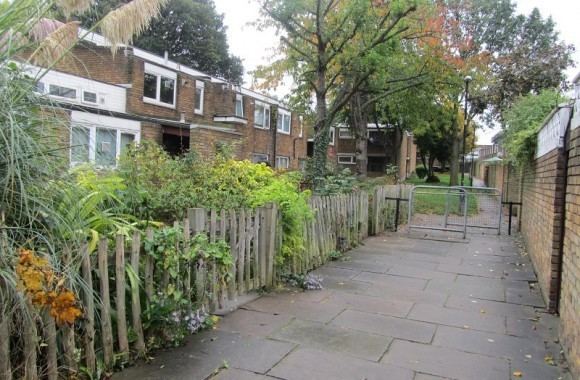 | ||
Authority | ||
Cressingham gardens
Cressingham Gardens is a council garden estate in Lambeth. It is located on the southern edge of Brockwell Park. It comprises 306 dwellings, a mixture of four, three and two-bedroom houses, and one-bedroom apartments. It was designed at the end of the 1960s by the Lambeth Borough Council Architect Edward Hollamby, and built at the start of the 1970s. In 2012 Lambeth Council proposed demolishing the estate, to replace the terraced houses by apartment blocks. Most of the apartments would then be for sale to the private sector. The residents, those in Lambeth who wish to prevent the gentrification of the borough, and those who want to conserve what they believe to be important architectural heritage, are campaigning to prevent its demolition.
Contents
- Cressingham gardens
- Save cressingham gardens outrage as labour council agrees demolition
- Context
- History
- Urban design innovations
- Design failings
- Successful design features
- Redevelopment plans
- Gated development
- The redevelopment controversy
- Judicial review
- The case for listed status
- Historical importance
- Architectural model
- References

Save cressingham gardens outrage as labour council agrees demolition
Context
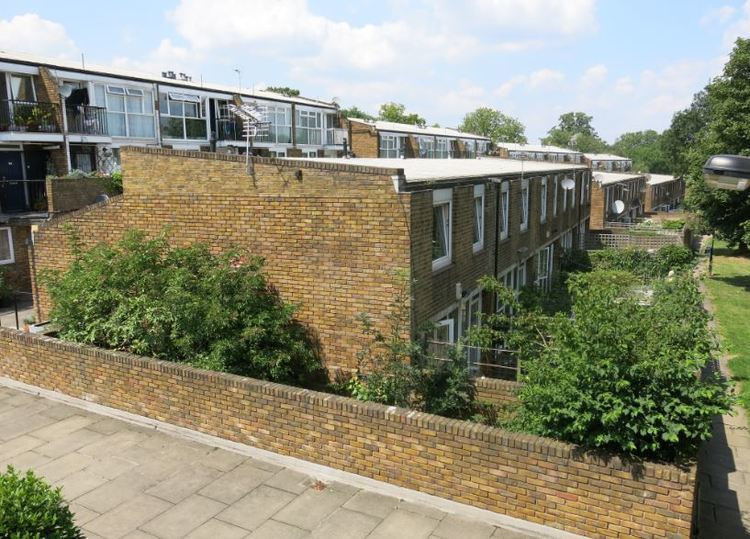
Its design was inspired by the social reformers who advocated, and showed the benefit of providing houses with gardens for those who can only afford to rent. It was a reaction to the failure of council estates of multi-storey apartment blocks to provide a good family homes. Ted Hollamby's innovative design showed how it was possible using low rise dwellings, to achieve the same residential density as estate of multi-storey apartment blocks; and how pedestrianizing the estate allowed much better use of the space between the dwellings, as this space could be used for gardens rather than car parks and access roads. The estate has been a proven success and has enabled a good quality of life for its residents, and led to the development of a mutually cooperative community. There are however, supposedly insurmountable structural defects on the estate, i.e., problems with the guttering - currently being dealt with through a Lambeth Council programme of "weathertight repairs", and supported by a ten year warranty - and the land drains. These problems have led the Labour controlled Lambeth Council elected in 2010 to propose demolishing the estate, and replacing it with an estate of multi-storey apartment blocks. The majority of the new apartments will be for those can afford to buy. The site is a prime location, and two bedroom apartments could sell for over half a million pounds. This makes re-developing the estate profitable. In July 2015, the residents were granted permission to seek judicial review of the Lambeth Council's decision to demolish the estate and not consider the option of repair and refurbishment. In November 2015, the high court ruled that it was unlawful for Lambeth Council not to consider the option of repair and refurbishment. Lambeth Council "resumed" consultation for 5 weeks in early 2016, and used the results of the sparsely-attended workshops and exhibitions to justify arriving for a second time at a decision to demolish. In August 2016 residents were granted permission to seek judicial review of the second demolition decision. There is also a controversy concerning listed status. An application for listed status was made and rejected. It is suggested by those interested in urban design that Historic England failed to appreciate the importance of Cressingham Gardens as an architectural model for high residential density inner city housing.
History
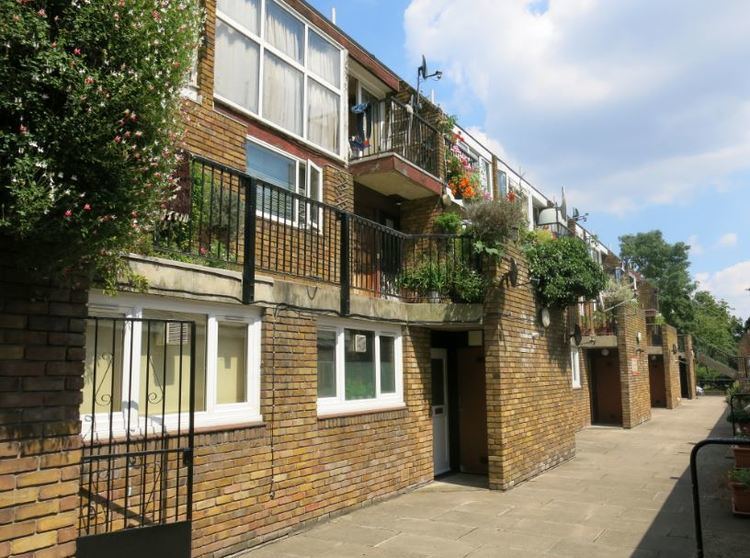
The 1969 Lambeth Council was controlled by the Conservative Party. The Conservatives, at that time, believed that the council should provide homes for all those who could not afford to buy a house. In inner London, in the 1950s and 1960s, estates with multi-storey apartment blocks provided the dominant architectural model for council housing. The seminal study Family and Kinship in East London showed that such apartments did not prove as satisfactory a family home as a house with a garden. By the 1970s many councils were returning to building houses, rather than multi-storey apartment blocks, and Lambeth Council was a leader in this trend.
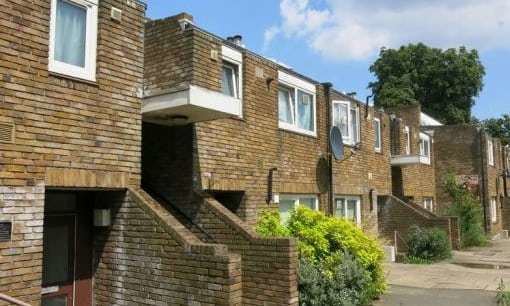
As Borough Architect, Ted Hollamby had designed different types of council dwellings, tower blocks, tenements, houses. He 'passionately believed that council housing should be as good, if not better than private housing'. His design for Cressingham Gardens was informed by failure of multi-storey tower blocks to provide good family homes. He was also aware of the importance of gardens in enhancing the quality of life of the residents of a dwelling, His design for Cressingham Gardens ensured 'every home its splash of greenery and colour'. In recognizing the importance of gardens, he was following an English tradition of the garden city and garden suburbs.
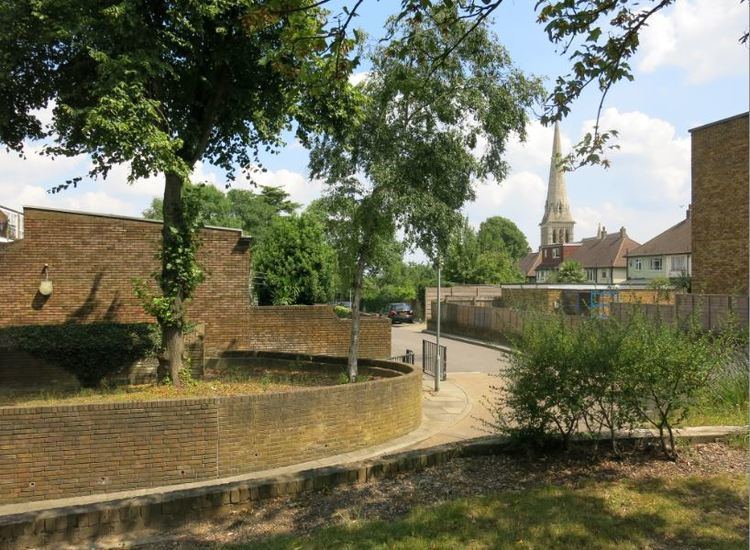
In 1969 Ted Hollamby submitted his team's design for Cressingham Gardens to the Housing Committee. The deputy chairman of the housing committee was Sir John Major. The committee recognized the exceptional importance of the innovative design and minuted 'congratulations to Cressingham’s architects on their ‘bold and imaginative scheme'.
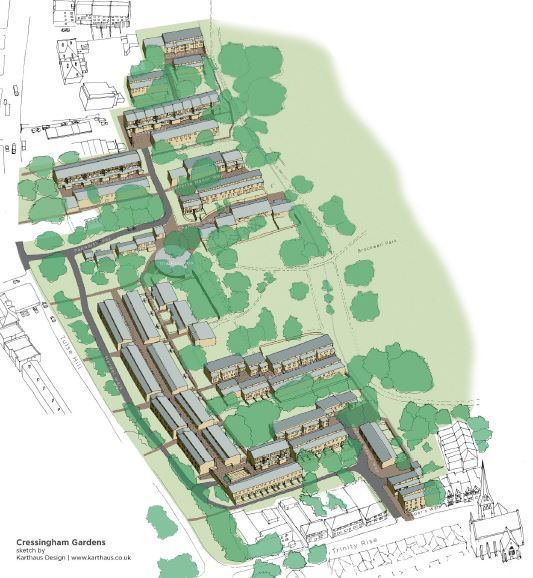
The initial contract for the building estate was for £1.58 million, or approximately £5,500 per dwelling. If the retail price index is used to convert to 2015 prices the costs are: £24 million for the build, with a cost per dwelling of £80,000.
The building of Cressingham Gardens was interrupted by a national building strike, and the contractors terminated the contract. In 1970 Lambeth Council became Labour controlled. To complete the estate, the new housing committee, on the advice of Ken Livingstone, who was deputy chairman, authorized the use direct labour. Building the three hundred dwellings took seven years.
Urban design innovations
The estate is built at very high residential density, over 250 persons/hectare(100/ acre). In order to provide this residential density in an estate of low rise dwellings, rather than an estate of multi-storey apartment blocks, Ted Hollamby had to produce a number of urban design innovations.
Design failings
Lambeth Council give design failings, and the expense of bringing the estate up to modern standards, as the justification for its planned demolition. These failings are said to be a consequence of the innovative design for the estate, but the consequence only occurs as a result of the negligence of the council to do necessary maintenance. In particular, rather than repairing and refurbishing six homes imperilled by a single incidence of subsidence, they have been bricked up and left vacant for up to sixteen years.
The council-appointed consulting structural engineers identified the following problems:
Successful design features
Although the estate has not always been properly maintained, it has enabled a high quality of life for its residents. Ted Hollamby wanted to ensure that design of the estate led to a community developing, In this he was successful. 'Overwhelmingly, residents talk of their friendly neighbours and the estate’s strong sense of community – they look out for each other, keep an eye on each other’s children'.
The social mix of residents in Cressingham Gardens is the same as in the sink estates of Lambeth. The probable cause of the community spirit is that the pedestrianized avenues of the estate provide an area for friendly, neighbourly social interactions. It is these social interactions have led to a mutually supportive community amongst the ethnically and socially diverse residents on the estate.
The good indication of mutual cooperation between those on the estate is seen in the YouTube video they produced as part of their campaign to save their estate, their homes, and their community.
There are three areas where its innovative urban design has resulted in improvement over an estate of multi-storey apartment blocks.
Redevelopment plans
Lambeth Council have stated that it would cost £9.4 million (£30,000 per dwelling) to fix the structural defects on the estate. They further state that the £30,000 per dwelling to do the necessary repairs is three times what they can afford.
Instead they are proposing to redevelop the site in partnership with a property developer. The developer would pay for the site by agreeing to build apartments for social housing. Creating the vacant building plot required, will entail, demolishing all the dwellings, bulldozing the gardens and felling the trees on the site. On the cleared site multi-storey apartment blocks would be built. There will be more dwellings, 464 apartments will replace 306 houses, and apartments; but new development will be mostly one and two bedroom apartments, there will be no four bedroom houses with gardens. Hence the residential density in terms of bedrooms per hectare will approximately the same. A minority of the new dwellings will be for rent, the aspiration is 40%, the majority will be for sale to private buyers. What makes it profitable for a property developer to knock down 306 council houses and build 190 new apartments to replace them, is that he can sell 274 apartments.
The site is a prime location. It has direct access to Brockwell Park and good communications with Gatwick airport and St Pancras International. In such a location a developer could plan on selling a two bedroom apartment for between half and three quarters of a million pounds. In a similar scheme in at the Heygate Estate, Elephant and Castle, a one bedroom apartment sells for £569,000, and a two bedroom apartment for £801,000.
The apartments for sale in the redeveloped Cressingham Gardens will not be for people who work for a living in London. The median earned annual income in London is £34,000. This means an apartment in the redeveloped Cressingham Gardens would be for sale at nearly fifteen times median earned income.
From the sale of 274 apartments the developer could plan on a revenue of over £137 million. Provided the apartments can be built for less than £300,000 each, a profit can be made.
It would seem, that because the council cannot afford £30,000 for repairing and refurbishing a property, a property developer has to be brought in, resulting in an initial loss of 306 dwellings built for letting at an affordable rent, and a permanent loss of over hundred such dwellings.
Gated development
In order for the maximum value of the site to be realized, it will have to be a gated development. There is now a generic design for such developments. The apartments for private sale are in a tower block on top of a car park. Entrance to the car park is through a barred gate, managed remotely by a security company. This was the standard design on display at the property fair run by Mimpin. The block for social housing has a separate entrance so as to prevent social interaction between private owners and welfare claimants.
The redevelopment controversy
Lambeth Council claim that the plan to demolish council houses is to enable more council dwellings to be built. They say that 'London is faced with the greatest housing crisis since the Second World War', They also say that they are paying for 1,800 families to live in temporary accommodation, they have on their books 1,300 families living in severely overcrowded conditions, and 20,000, families on their waiting list. Lambeth Council say that inaction is not an option, and that in contribution to solving the housing crisis they are committed to proving a thousand new dwellings at council rent levels over the next four years. The council say they could achieve this objective through a process of estate regeneration (sic). It is not clear if the proposed 1,000 new dwellings will provide a net increase in dwellings available in Lambeth at council rent levels.
There are many people in council dwellings, in Brixton, Lambeth Walk, and Stockwell who do not trust the council, they fear that the council is engaged in a policy of gentrification, and the real aim of the redevelopment is to increase property values in the borough, to the benefit of owner occupiers in Herne Hill, West Dulwich, and Streatham.
Those renting from the council fear that tenants who lose their homes in redevelopment projects will be relocated out of the borough, and building the new dwellings to allow them to return, will be delayed indefinitely.
The families in Cressingham Gardens fear that when they are evicted from their house with a garden, the alternative accommodation offered will be an apartment in a tower block on a sink estate, a possibility not precluded by the Council's 'Tenants - Key guarantees' document.
The overwhelming majority of residents on the estate fear that they will lose the friendly and helpful neighbours and the benefit of living in mutually supportive community.
Judicial review
On 17 July 2015 the high court ruled that Eva Bokrosova's request for judicial review of Lambeth Council decision to only consider options for demolishing Cressingham Gardens.
The court was told that Lambeth Council originally consulted on five options:
At the High Court Mr Justice Holman granted permission to allow Ms Bokrosova to challenge Lambeth Council’s decision to ‘abruptly close down’ consultation on options 1-3, options which were strongly supported by residents.
On November 24 Mrs Justice Elisabeth Laing ruled that the decision to remove options 1, 2 and 3 from the consultation was unlawful.
The case for listed status
Cressingham Gardens is shown in Open House London. This is billed as London's greatest architectural festival, on which great architecture from all periods is on display for free. On a tour of the estate were those interested in great architecture. They were told that an application had been made for Cressingham Gardens to be granted listed status, and the application had been unsuccessful. Tour members were astonished as they had seen buildings which had been given listed status, which were of far less merit than Cressingham Gardens. Their view was that a strong case could, and should be made for giving Cressingham Gardens listed status, and backing obtained for the application from those with influence. Listed building status is granted under two headings: Historical interest and important architectural model. The case is that Cressingham Gardens deserves listing under both categories.
Historical importance
Social reforming English urban planners have recognized the importance of providing houses with gardens to families who rent their homes. Cadbury's homes in Bournville were the first. The most influential was Sir Ebenezer Howard with his proposal for Garden cities, which provided the model for Welwyn Garden City and the post war new towns. The most idealistic were the Barnetts in their design for Hampstead Garden Suburb. In all these places the original buildings had to be given listed status to prevent them being demolished by property developers and replaced by apartment blocks.
There is an arguable case that Ted Hollamby's innovation of building houses, intended for rent, with very small gardens, in a pedestrianized estate, so that a high residential density can be achieved, is as important an historical advance as the innovations of the garden city movement, and Cressingham Gardens should be given listed status to preserve the first instance of this important innovation in urban design.
Architectural model
The combination of Ted Hollamby's urban design innovations in Cressingham Gardens created an architectural model, the Council garden estate, a pedestrianized estate of houses with gardens, in which all the properties are let at council rent levels. It is claimed that this is an important model for inner city housing, as the model allows very high residential densities, and it has been shown to enable a high quality of life for residents.
